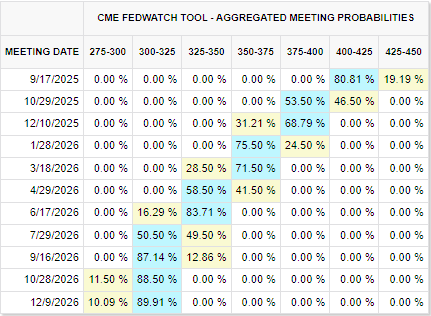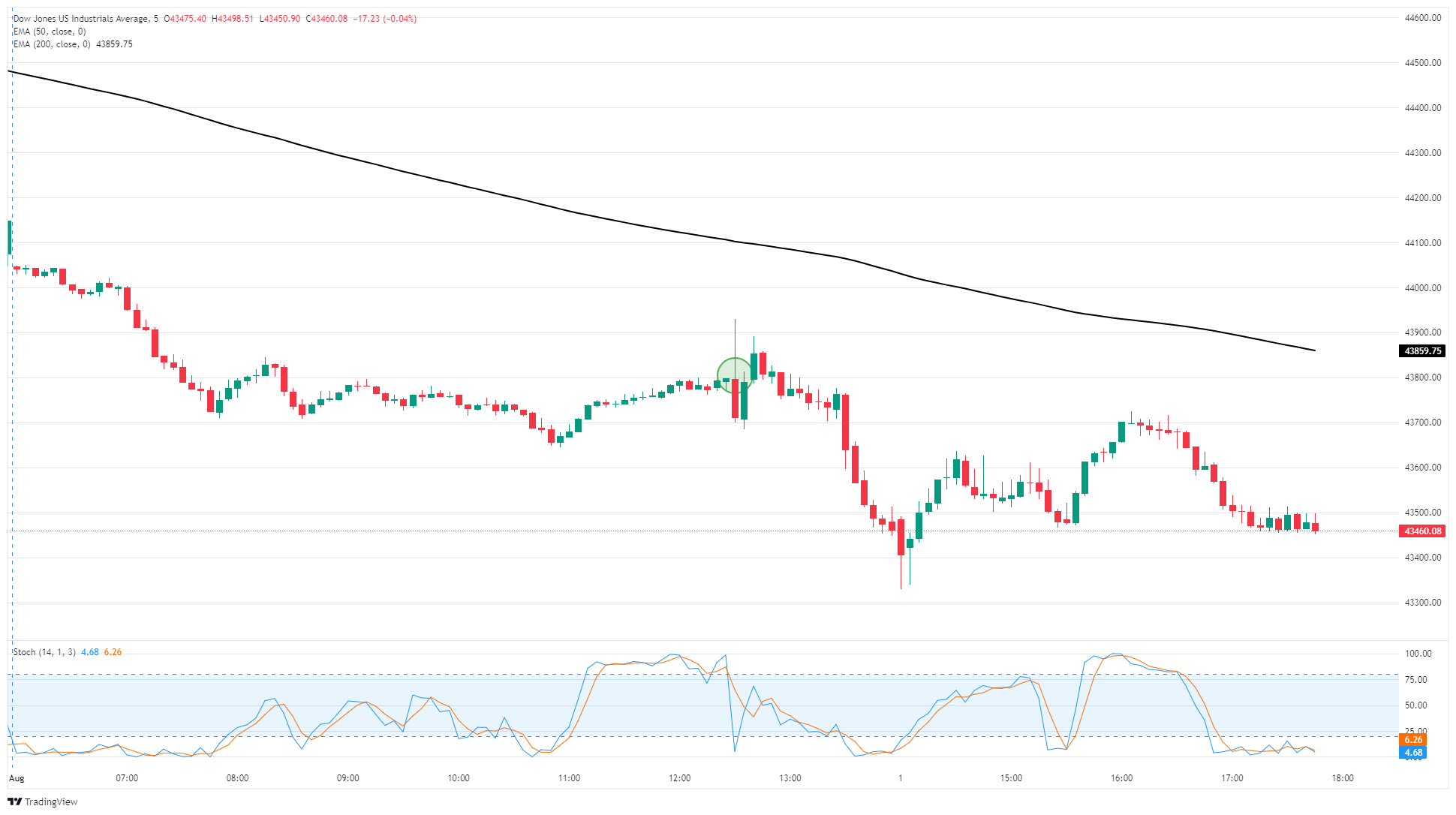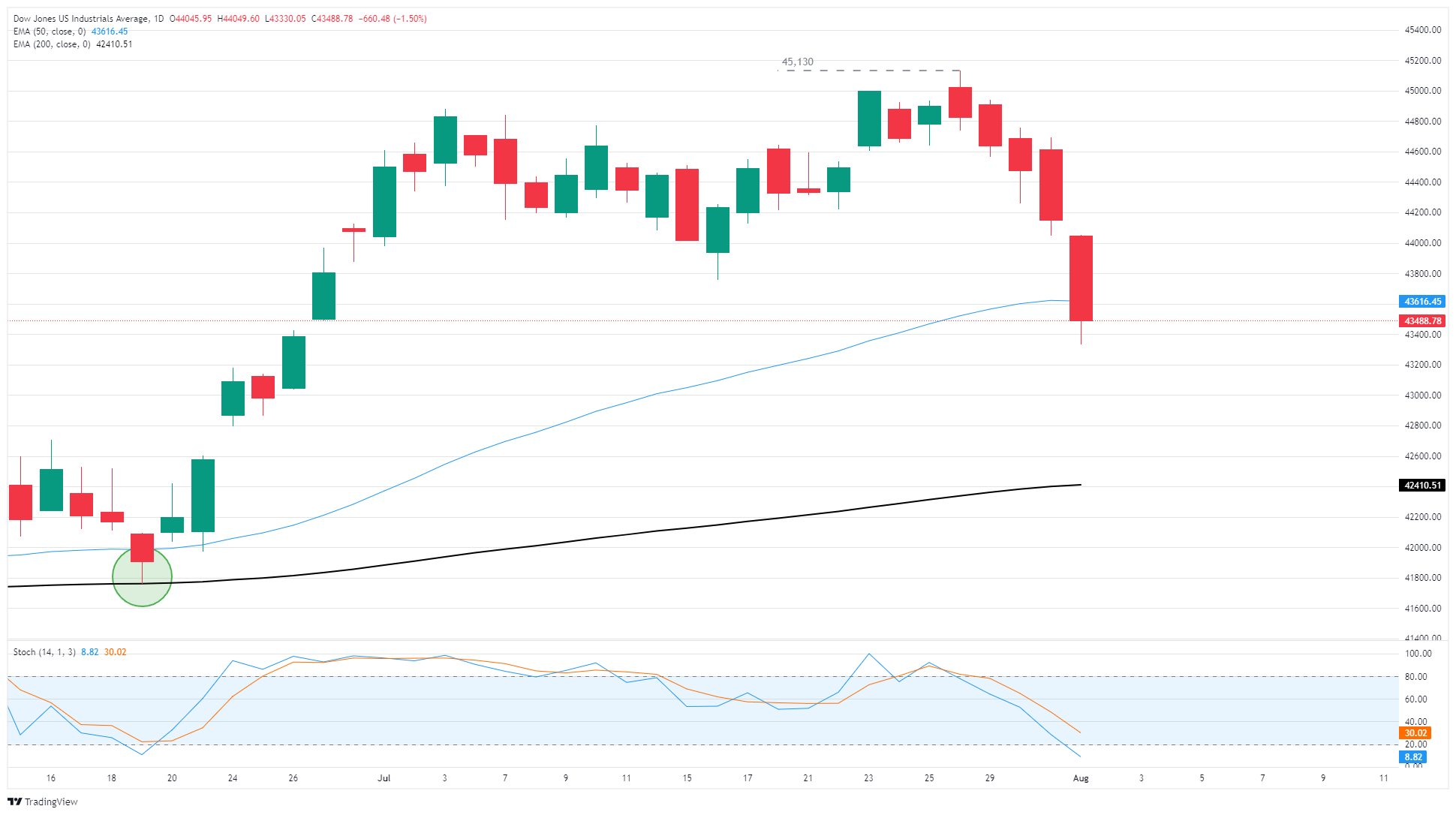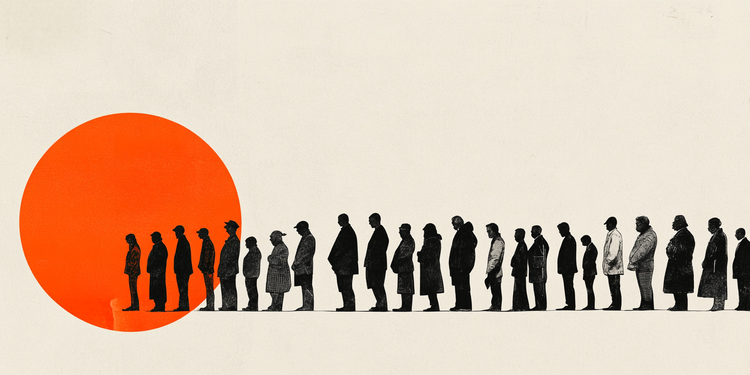- The Dow Jones tumbled over 1.85% on Friday peak-to-trough.
- US NFP jobs figures came in well below expectations alongside steep revisions.
- A shuddering labor market has reignited hopes for more Fed rate cuts soon.
The Dow Jones Industrial Average (DJIA) plummeted almost 2% top-to-bottom on Friday, falling over 800 points from Thursday’s closing bids at its lowest point. Equity markets are scrambling to recover their footing after a disappointing Nonfarm Payrolls (NFP) report that showed the US added far fewer jobs in July than expected.
The Dow Jones fell to a five-week low, tapping 43,330 for the first time since late June and running into technical congestion at the 50-day Exponential Moving Average (EMA) near 43,600. The major equity index saw its worst week since the Trump administration announced global tariffs in early April, and the Dow is down over 3% from Monday’s opening bids near 45,000.
NFP down, rate cut hopes up
US NFP net job gains slowed sharply in July, falling to 73K over the month, well below the expected 110K. On top of the downside print, previous months saw a sharp revision lower, with May getting revised down by 125K to 19K and June’s NFP getting adjusted to a scant 14K. The revisions wiped over 250K of net job increases off the books over two months, bringing US NFP net employment increase to just 104K over a three-month period, with further revisions expected in the months to come.
With a sharp downward revision in the US’s labor outlook now on the table, markets are piling back into bets of a rate cut from the Federal Reserve (Fed) in September. Markets had pulled back on rate cut expectations after the Fed held interest rates steady earlier this week, citing a need to monitor additional employment and inflation data. According to the CME’s FedWatch Tool, rate markets are now pricing in upwards of 80% odds of at least a quarter-point rate trim on September 17, up from the 45% odds priced in prior to Friday’s NFP release.

Despite a steepening slowdown in what was considered a healthy labor market until Friday, the US is still grappling with a general decaying in economic data overall: inflationary pressure, mostly from potential tariff impacts, are still biting around the edges of headline inflation metrics, and sentiment surveys at both the business and consumer levels are beginning to throw up red flags.
Underlying economic conditions add to concerns around jobs
July’s US ISM Manufacturing Purchasing Managers Index (PMI) fell to 48.0, marking a fifth straight month below 50.0, with the majority of surveyed firms expecting to see worsening hiring conditions through August. As noted by the Institute for Supply Management (ISM), firms saw a general upswing in orders and general demand, but businesses are still cutting back on their hiring practices and actively managing headcount.
According to the ISM, 79% of the US’s manufacturing sector Gross Domestic Product (GDP) output contracted in July, up sharply from June’s 46% as businesses continue to clamp down on hiring and investment plans. Trade policy uncertainty remains a key thorn in the US economy’s side, even as the Trump administration continues to play on-again, off-again with tariffs.
President Donald Trump’s August 1 deadline on import taxes has turned into another messy delay. President Trump announced early Friday that tariffs, which were set to go into effect at midnight Thursday, are now set to begin on August 7 as the Trump team continues to try to wrangle trade deals out of other countries, with dubious to questionable results thus far.
Read more stock news: Amazon stock sheds 8% as market in turmoil following jobs report
Dow Jones 5-minute chart

Dow Jones daily chart

Dow Jones FAQs
The Dow Jones Industrial Average, one of the oldest stock market indices in the world, is compiled of the 30 most traded stocks in the US. The index is price-weighted rather than weighted by capitalization. It is calculated by summing the prices of the constituent stocks and dividing them by a factor, currently 0.152. The index was founded by Charles Dow, who also founded the Wall Street Journal. In later years it has been criticized for not being broadly representative enough because it only tracks 30 conglomerates, unlike broader indices such as the S&P 500.
Many different factors drive the Dow Jones Industrial Average (DJIA). The aggregate performance of the component companies revealed in quarterly company earnings reports is the main one. US and global macroeconomic data also contributes as it impacts on investor sentiment. The level of interest rates, set by the Federal Reserve (Fed), also influences the DJIA as it affects the cost of credit, on which many corporations are heavily reliant. Therefore, inflation can be a major driver as well as other metrics which impact the Fed decisions.
Dow Theory is a method for identifying the primary trend of the stock market developed by Charles Dow. A key step is to compare the direction of the Dow Jones Industrial Average (DJIA) and the Dow Jones Transportation Average (DJTA) and only follow trends where both are moving in the same direction. Volume is a confirmatory criteria. The theory uses elements of peak and trough analysis. Dow’s theory posits three trend phases: accumulation, when smart money starts buying or selling; public participation, when the wider public joins in; and distribution, when the smart money exits.
There are a number of ways to trade the DJIA. One is to use ETFs which allow investors to trade the DJIA as a single security, rather than having to buy shares in all 30 constituent companies. A leading example is the SPDR Dow Jones Industrial Average ETF (DIA). DJIA futures contracts enable traders to speculate on the future value of the index and Options provide the right, but not the obligation, to buy or sell the index at a predetermined price in the future. Mutual funds enable investors to buy a share of a diversified portfolio of DJIA stocks thus providing exposure to the overall index.
Read the full article here
















